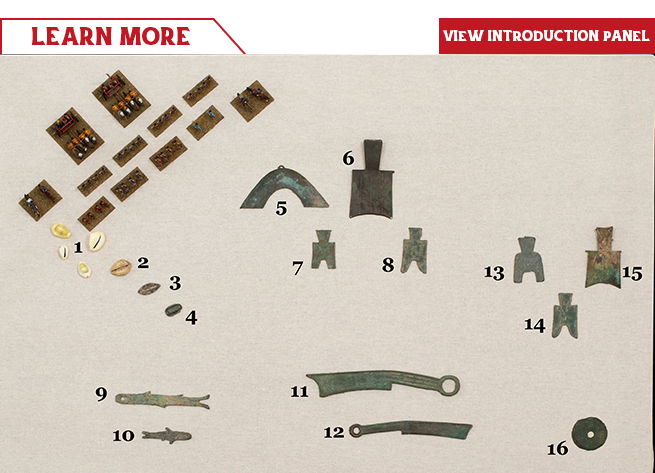
The history of money in China goes back to the end of the 2nd millennium BC. The earliest written reference appears in the 7th century BC work,The Book of Master Guan. Pearls, jade, gold, certain bronze objects and cowry shells were all used as currency and standards of value.
The first metal objects used as money that can be called “coins” were bronze tools, such as “knife” and “spade” money, introduced in the 7th–6th centuries BC during the Zhou Dynasty (1122-221 BC) – around the same time coinage first appeared in Asia Minor. These first “coins” were followed several centuries later by what became the basic form for Chinese coinage over the next two millennia: round, cast metal discs with holes in the center.
Knife & Spade Money
Derived from actual bronze knives and spades, these tools gradually evolved into money. For convenience, they became smaller and lighter to facilitate their use in exchange. No longer useful as tools, they kept their shape to symbolize their original purposes, and they varied in size to represent different values. During the Warring States period (476 – 221 BC), writing was introduced to identify the origin or weight.
Knife money had its origins in the Qi state in northern China, one of the most powerful of the early Chinese states. Spade money developed in the central states of China, beginning with hollow handles in the late 7th century BC, which were gradually flattened over time. Both types changed in shape and size, and both were abolished at the beginning of the Qin dynasty in 221 BC. A final short-lived series of modified knife and spade money was issued during the Wang Mang interregnum (AD 9-23).
Ban Liang
The final development of traditional Chinese money into its classic shape was the introduction of round coins with a central hole. The round hole variety was first introduced during the Warring States period (475- 221 BC). The Qin Dynasty introduced the ban liang (1/2 ounce) coinage with square holes in 221 BC Replacing all other regional variations, these coins featured a square hole and simple two-character legend denoting weight.
